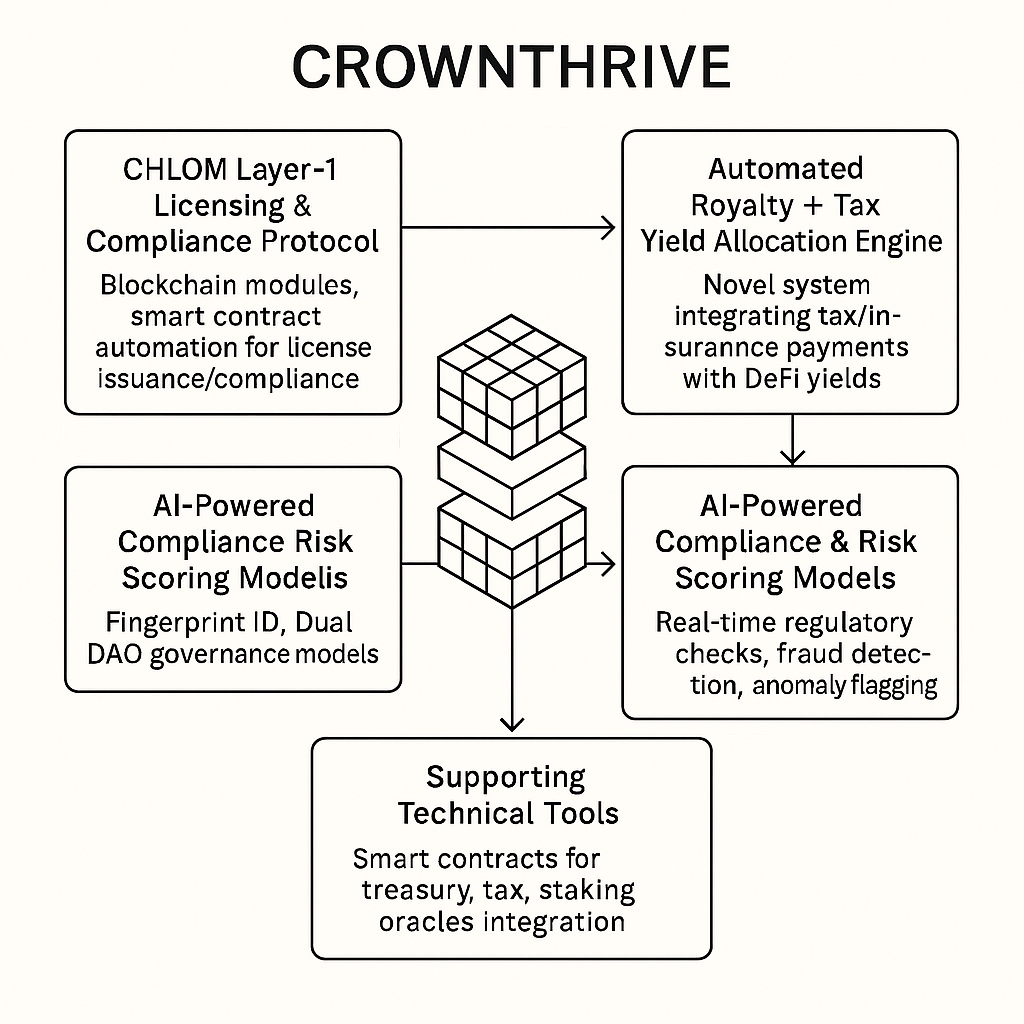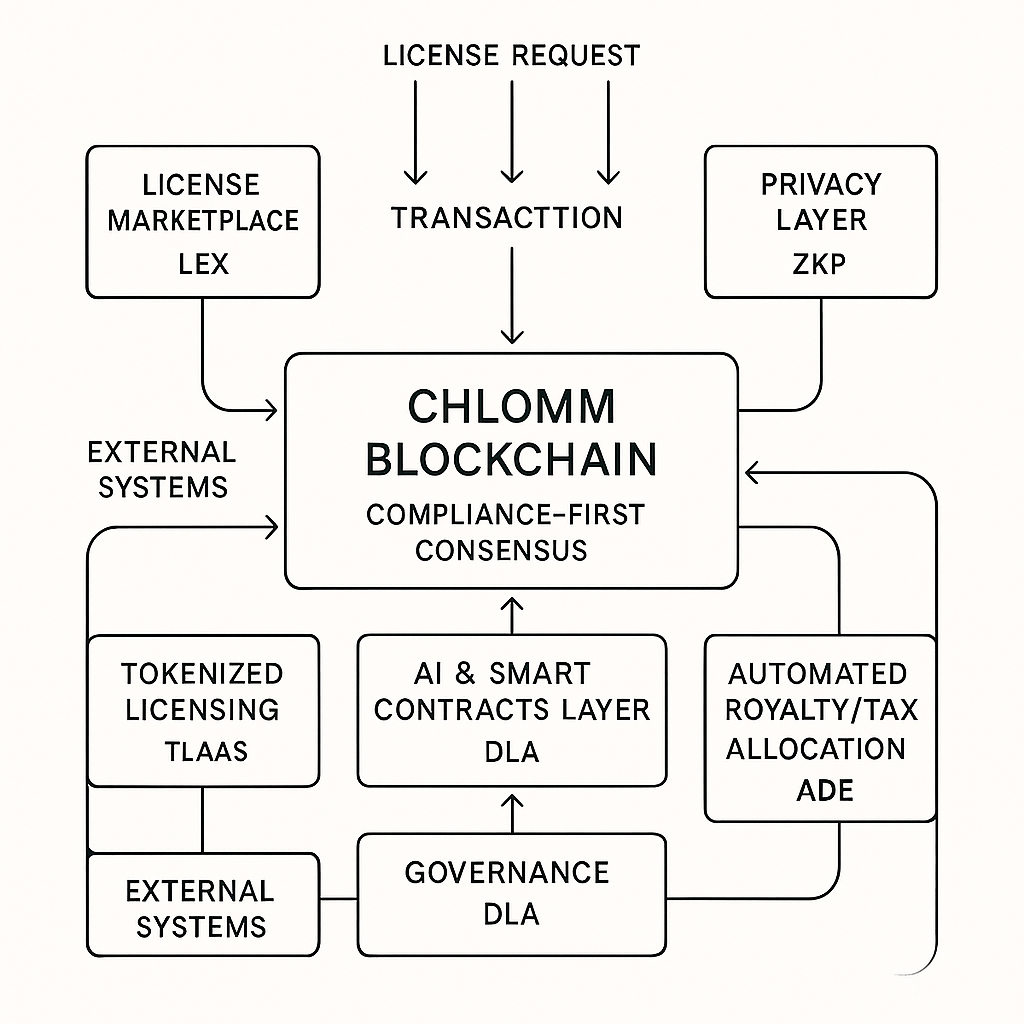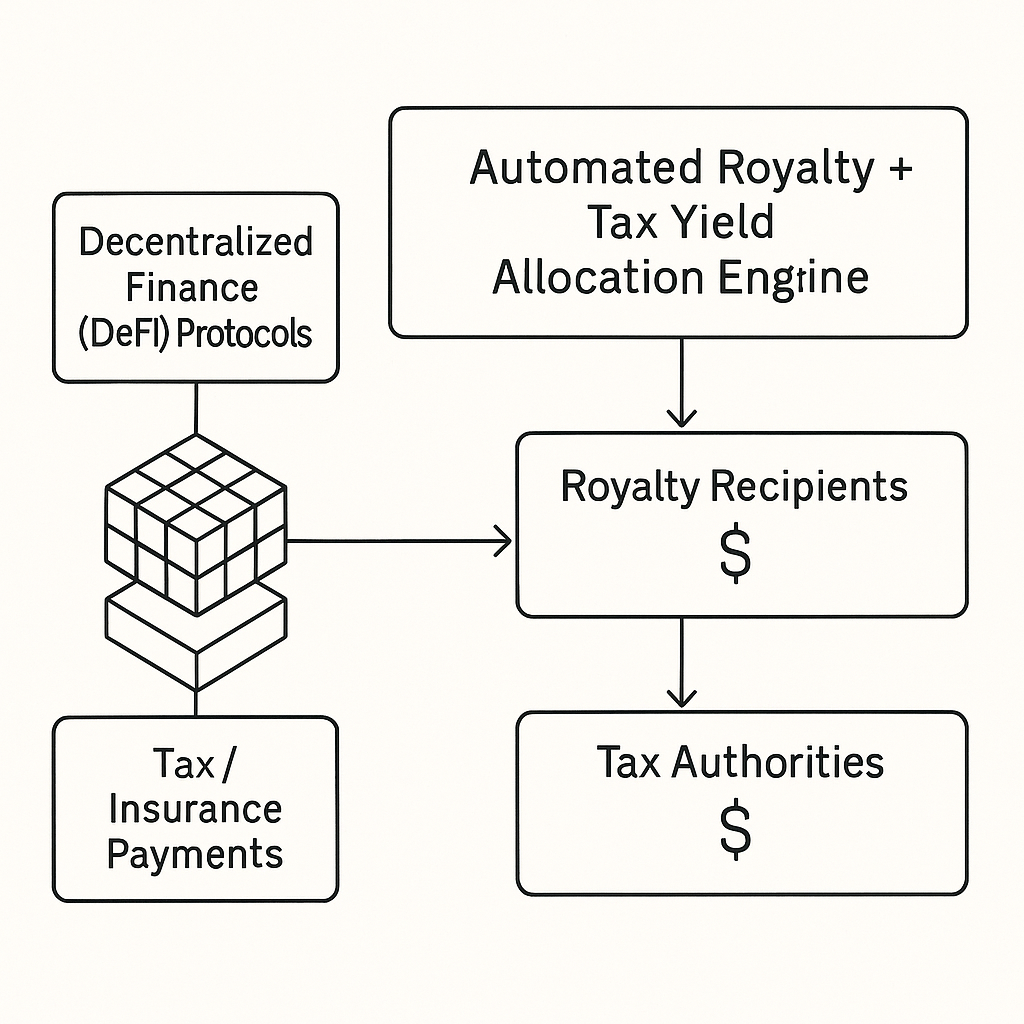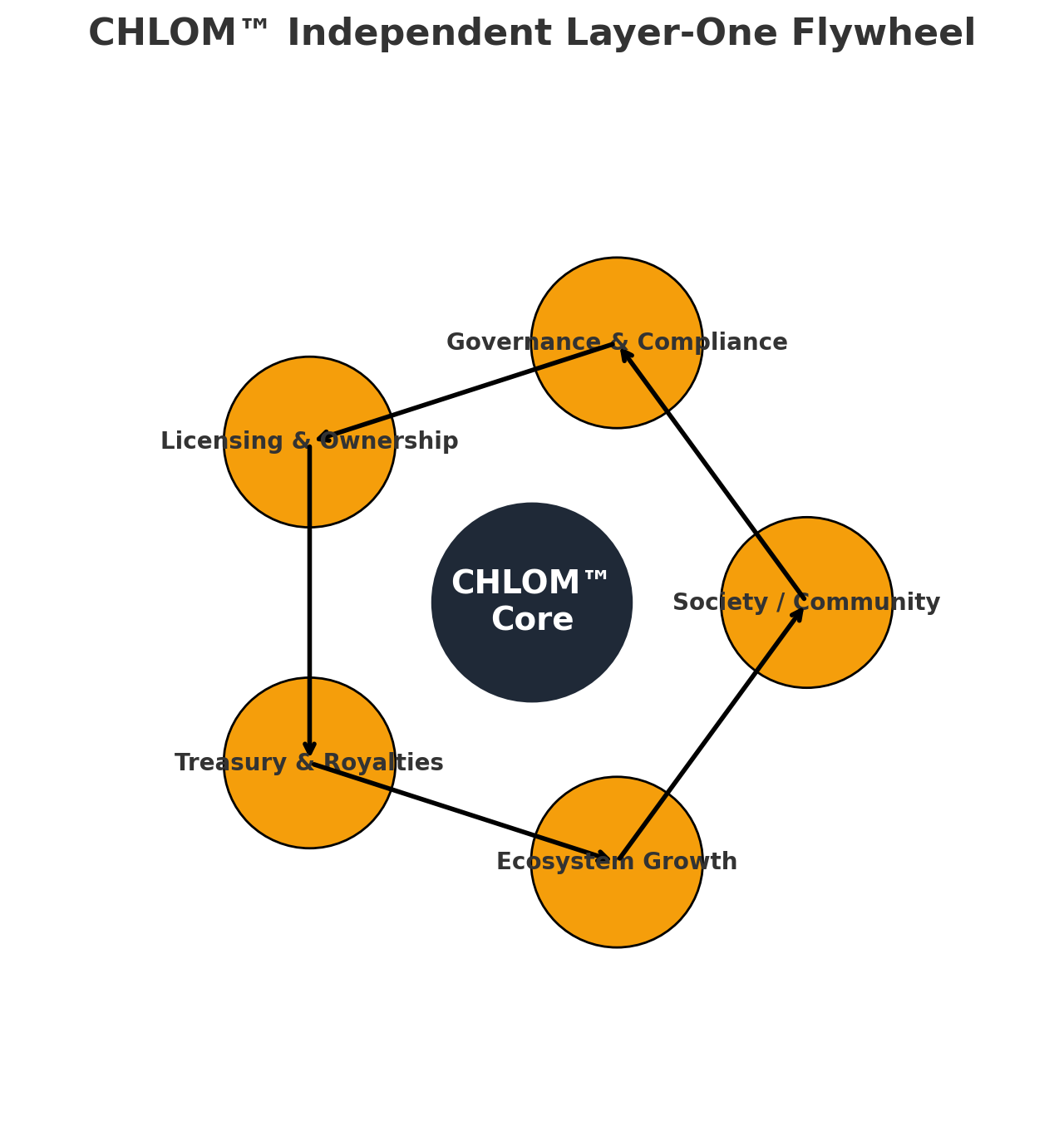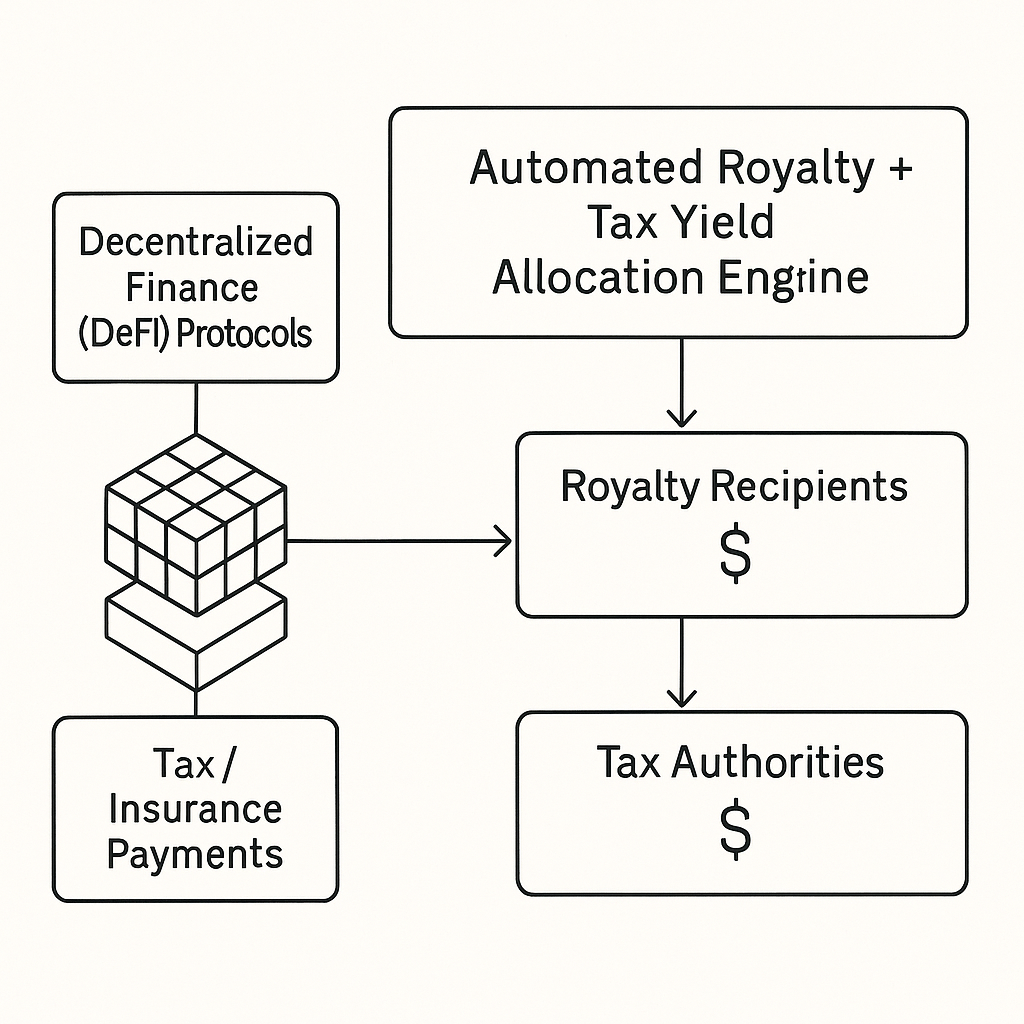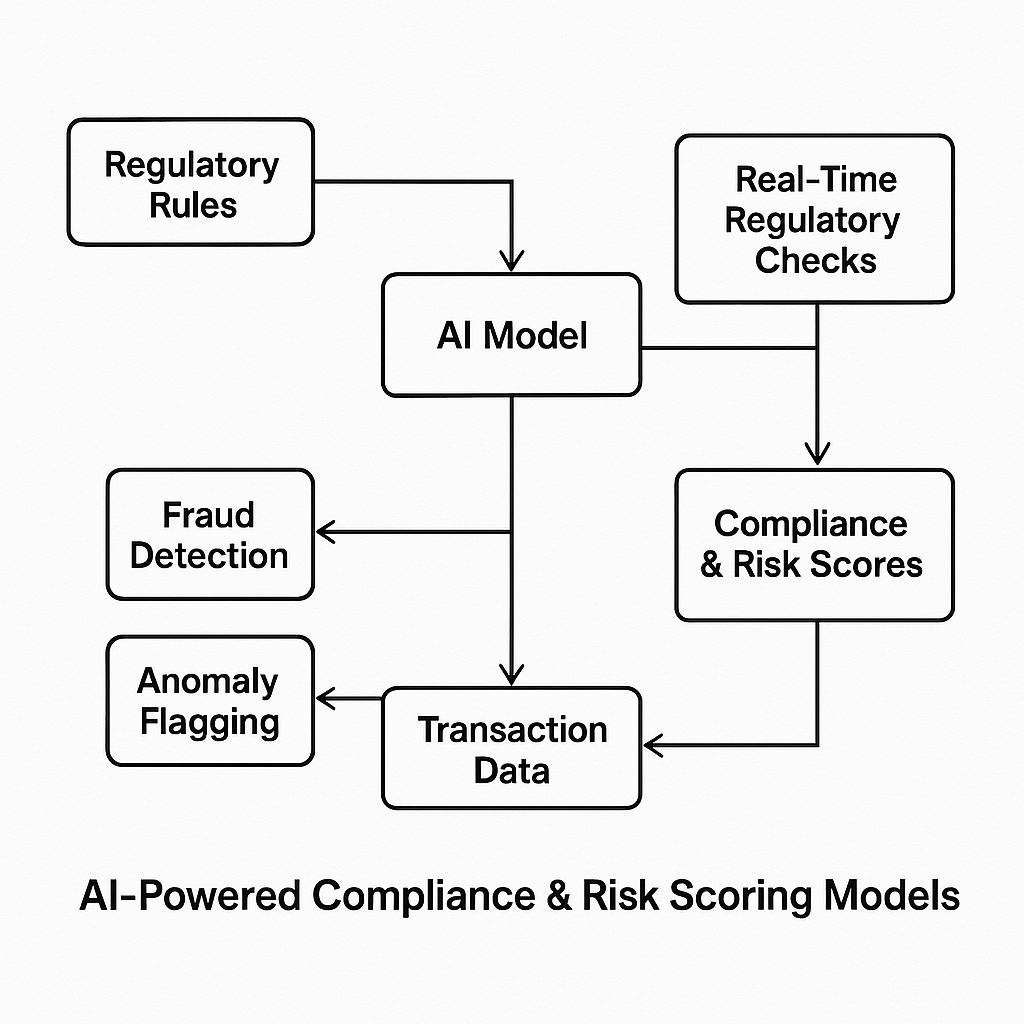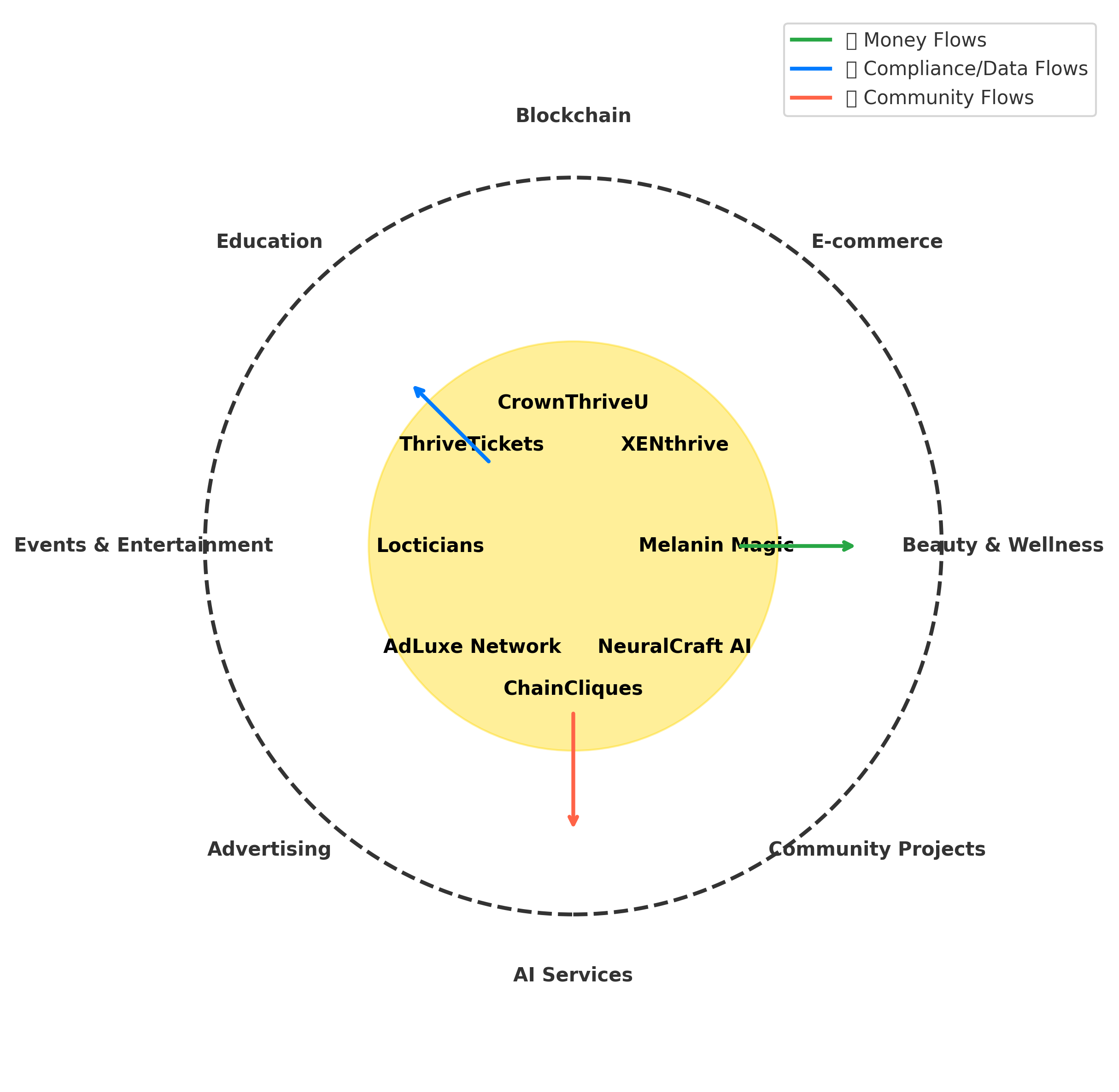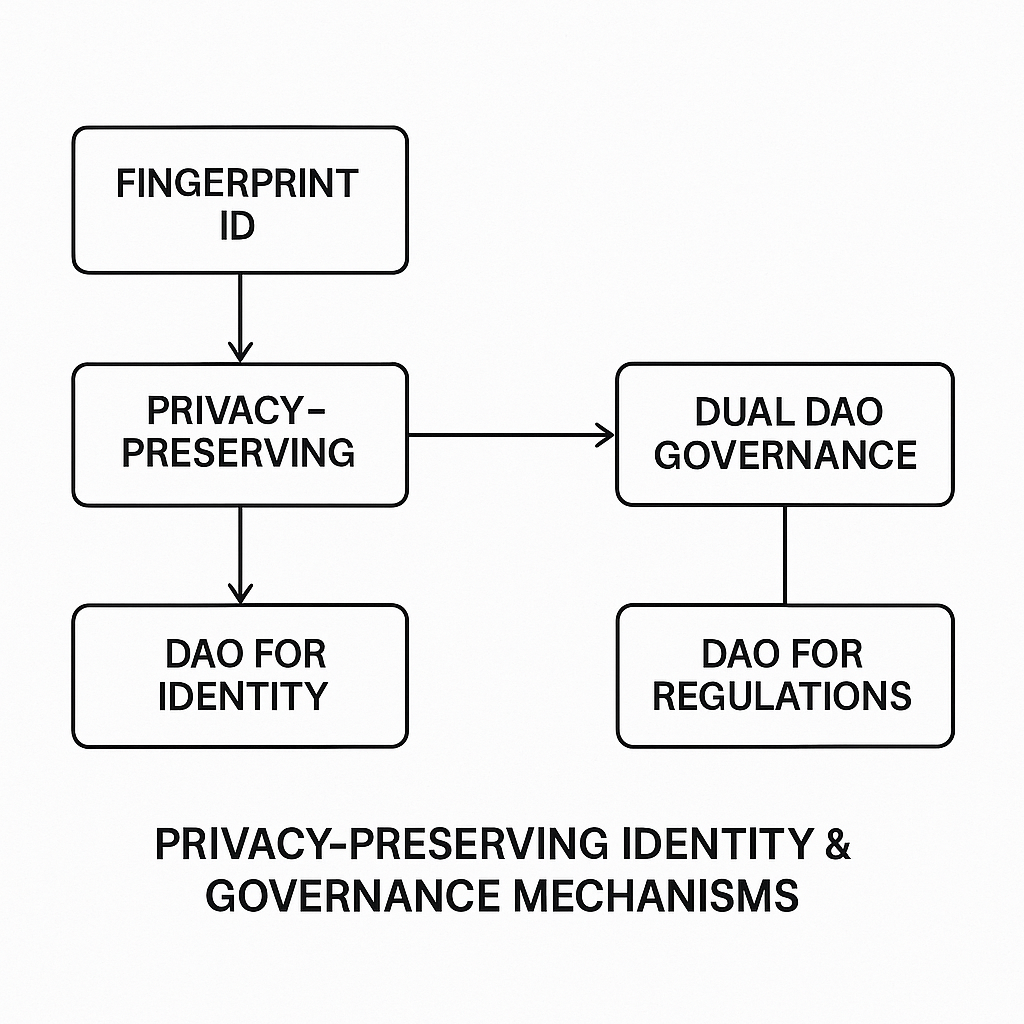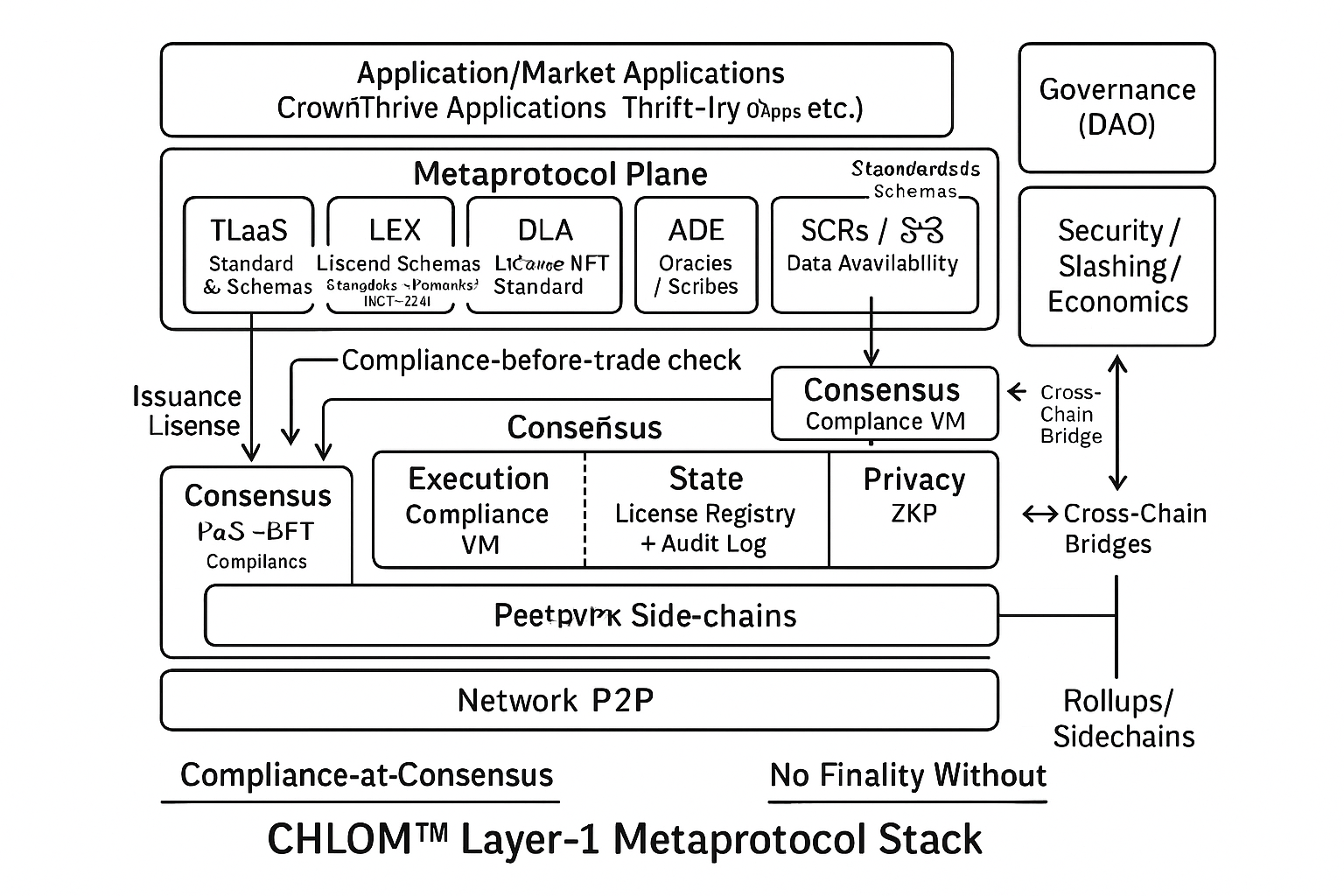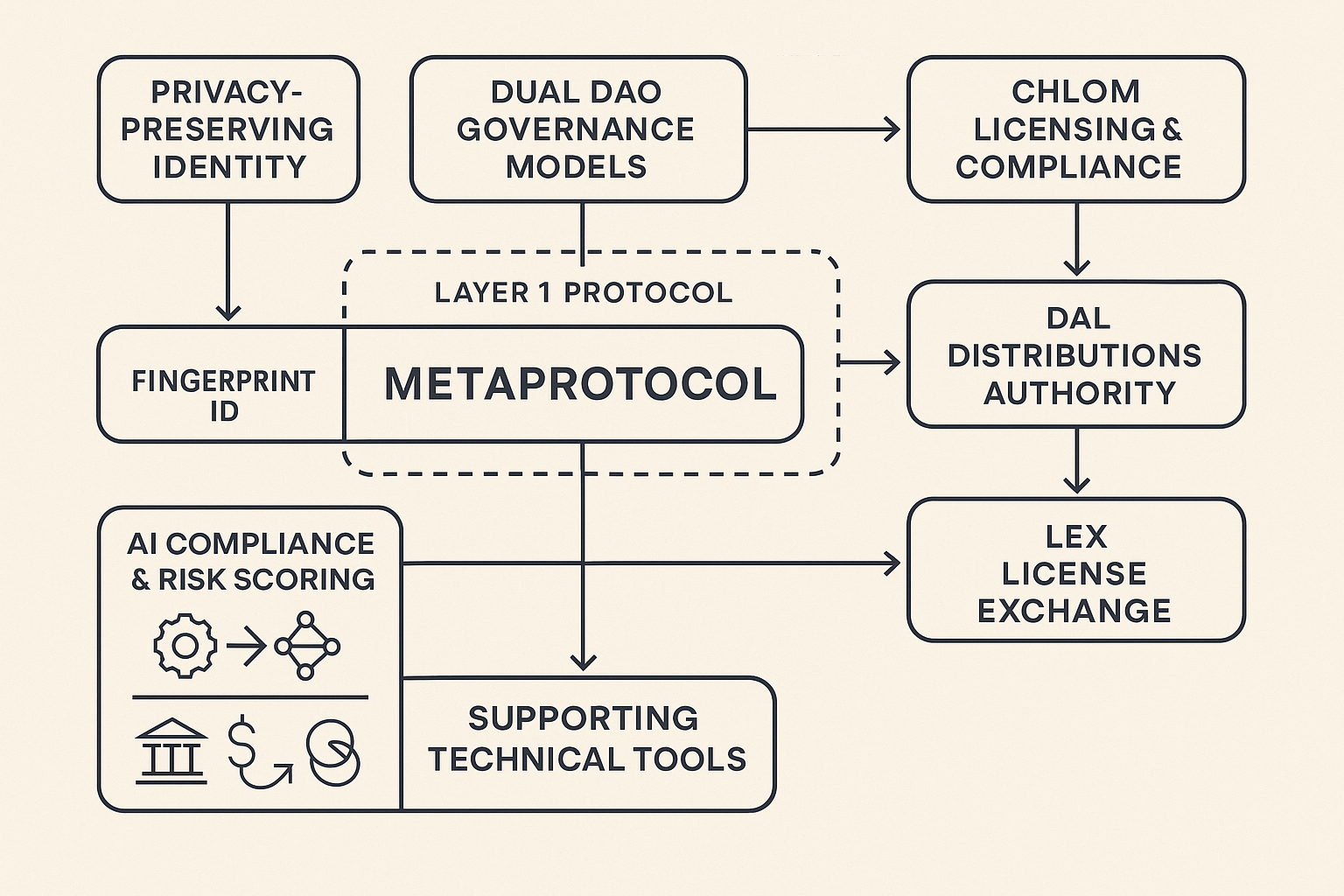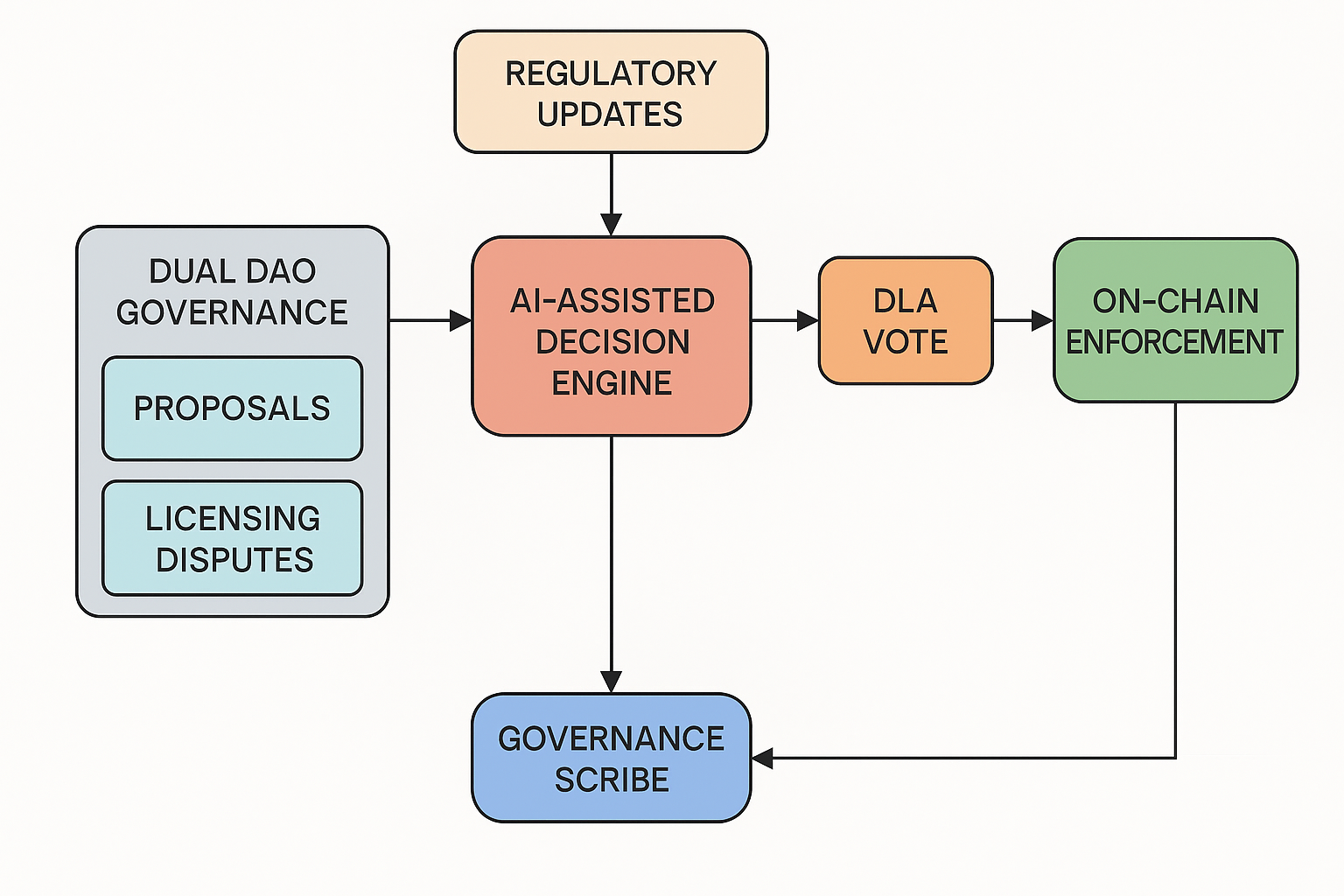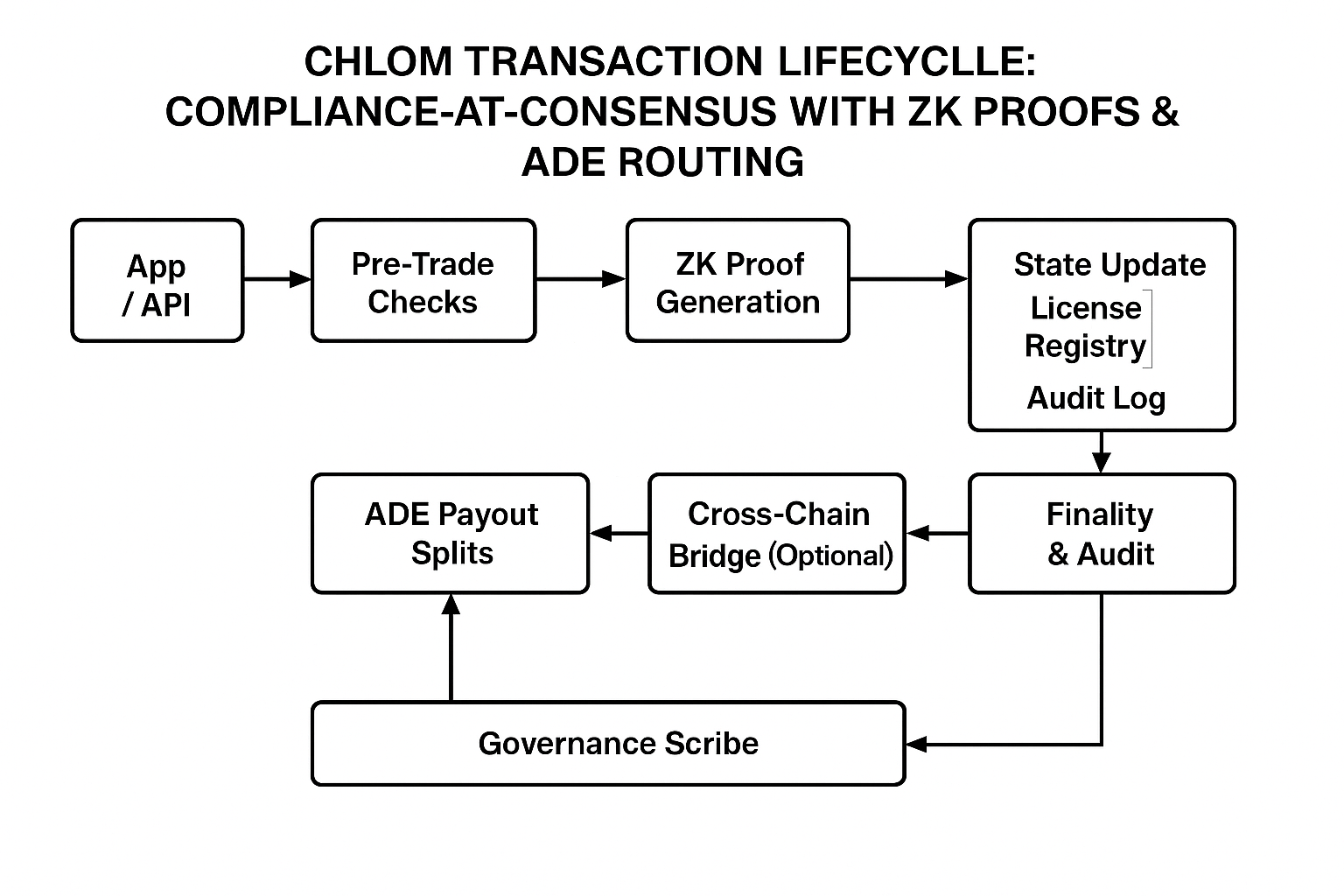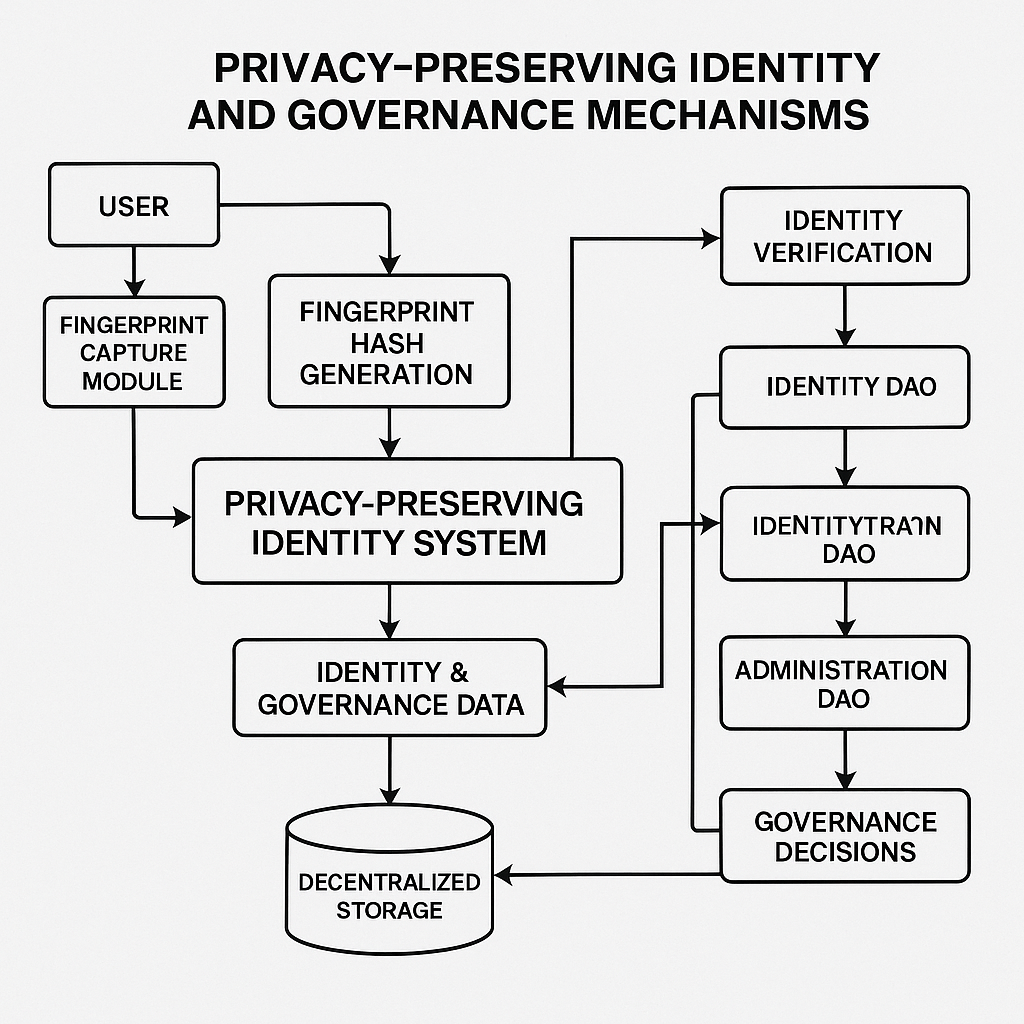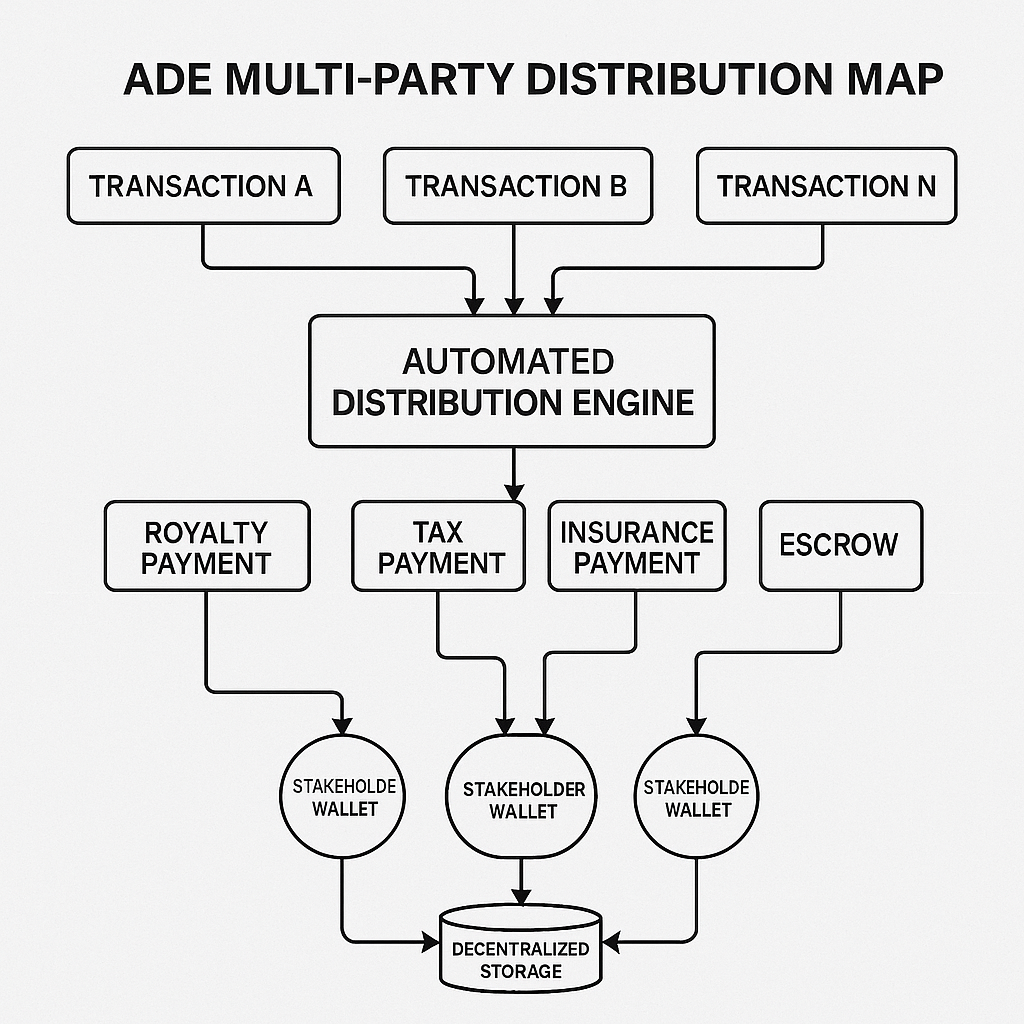CHLOM™ – Compliance Hybrid Licensing & Ownership Model (Layer-1 Protocol)
I. Title of Invention
CHLOM™ – Compliance Hybrid Licensing & Ownership Model A blockchain-based framework integrating real-time licensing, automated compliance enforcement, privacy-preserving identity, and programmable royalty/tax allocation at the consensus layer.
II. Cross-Reference to Related Applications
This application claims no priority to any earlier-filed U.S. or foreign patent applications at the time of filing. Applicant reserves the right to claim priority to subsequent filings related to CHLOM™ modules, extensions, or integrations.
III. Field of the Invention
The invention relates to distributed ledger technology, compliance automation, licensing frameworks, and digital asset governance. Specifically, it addresses the need for an integrated compliance and licensing protocol that operates natively at the blockchain consensus level while supporting both Web2 and Web3 environments.
IV. Background of the Invention
The expansion of digital trade, NFTs, tokenized assets, and decentralized finance has amplified the need for fast, verifiable licensing and dynamic regulatory compliance. Legacy systems present challenges:
- Manual Licensing Delays – Regulatory approval processes are slow and paper-based.
- Jurisdictional Siloing – Inconsistent laws prevent global standardization.
- Post-Transaction Enforcement – Violations are caught after settlement, leading to costly disputes.
- Fragmented Payment Routing – Royalties, taxes, and insurance require multiple systems.
CHLOM™ solves these by embedding compliance into transaction settlement, ensuring no non-compliant transaction can finalize.
V. Summary of the Invention
CHLOM™ is a Layer-1 blockchain protocol designed to:
- Issue and manage tokenized licenses in real-time.
- Enforce compliance-before-trade conditions.
- Automate royalty/tax/insurance distribution via programmable smart contracts.
- Use AI and Zero-Knowledge Proofs (ZKPs) for fraud detection and privacy-preserving verification.
- Maintain auditable governance via Decentralized Licensing Authorities (DLAs).
The protocol integrates with both Web2 APIs and Web3 smart contracts, enabling adoption by traditional enterprises, DAOs, and emerging markets.
VI. Detailed Description of the Invention
A. Core Components
- CHLOM™ Blockchain – A dedicated Layer-1 consensus mechanism embedding compliance checks in block validation rules.
- Tokenized Licensing as a Service (TLaaS) – Smart contract-based licensing issuance, renewal, and revocation.
- License Exchange (LEX) Marketplace – Decentralized exchange enforcing compliance requirements before asset transfer.
- Decentralized Licensing Authority (DLA) – Governance body with AI-assisted decision engines for license management.
- Adaptive Compliance Engine (ACE) – Rule-mapping engine converting jurisdictional regulations into executable logic.
- Attribution & Distribution Engine (ADE) – Splits payments into royalties, taxes, insurance, and stakeholder distributions.
- Oracles & Governance Scribes – Fetch external legal updates and record governance decisions immutably.
B. Functional Workflow
1. License Request and Validation
- Entity submits license request via Web2 dashboard, Web3 wallet, or API.
- ACE matches request against jurisdictional rules.
- AI model calculates compliance risk score.
2. License Tokenization
- Approved licenses minted as NFTs with embedded terms.
- Metadata includes expiry, jurisdiction, usage rights, and revocation triggers.
3. Marketplace Transactions
- LEX requires both parties’ licenses to be valid before trade execution.
- Non-compliance halts transaction; reason code issued.
4. Automated Payout Distribution
- ADE routes funds automatically:
- Royalties to creators.
- Taxes to regulatory wallets.
- Insurance premiums to underwriters.
5. Governance and Audit
- DLA nodes vote on major rule changes.
- Governance Scribes record outcomes for public audit.
C. Technical Architecture
- Consensus Layer: PoS-variant where compliance verification is part of block proposal/validation.
- Smart Contract Layer: Domain-specific language (DSL) for compliance rules.
- AI Layer: Fraud detection, anomaly scoring, predictive rule updates.
- Privacy Layer: ZKP verification without revealing raw data.
- Interoperability Layer: API connectors for ERP, CRM, and legacy licensing databases.
D. Alternative Embodiments
- Permissioned CHLOM chains for regulated industries.
- Sidechain compliance modules for region-specific laws.
- Non-blockchain deployment using distributed databases with cryptographic audit logs.
- License NFTs convertible to physical QR-coded certificates for hybrid use.
E. Advantages Over Prior Art
- Compliance-at-Consensus eliminates post-trade enforcement issues.
- Unified Payment + Compliance Layer merges financial and legal execution.
- Scalable to Any Industry due to modular architecture.
- Privacy-Preserving by Design supports GDPR, HIPAA, and similar standards.
VII. Brief Description of Drawings
(For draftsman — descriptions to be included in USPTO filing)
- FIG. 1: CHLOM™ high-level architecture showing core layers.
- FIG. 2: End-to-end license issuance, validation, and revocation workflow.
- FIG. 3: Compliance-before-trade transaction flow in LEX marketplace.
- FIG. 4: ADE automated royalty/tax distribution process.
- FIG. 5: ZKP-based identity verification sequence.
- FIG. 6: Governance model with DLA node voting and Governance Scribes logging.
VIII. Claims (Provisional Note)
Provisional applications do not require formal claims. However, the applicant intends to claim:
- A compliance-first consensus protocol.
- An integrated licensing issuance and enforcement engine.
- Automated royalty/tax routing tied to license validity.
- AI-driven compliance risk assessment using ZKP.
- Cross-platform licensing operable in Web2/Web3 hybrid environments.
IX. Abstract
A blockchain-based compliance and licensing protocol (CHLOM™) integrating tokenized licenses, AI-driven risk scoring, Zero-Knowledge Proofs, automated royalty/tax allocation, and governance enforcement at the consensus level. The system ensures compliance-before-trade across industries, supports privacy-preserving verification, and automates multi-party payouts via programmable smart contracts.
X. Filing Notes
- Entity Status: Likely micro-entity for reduced fees (USPTO $60).
- Attachments: Diagrams (6 total), flowcharts, sample JSON metadata for license NFT.
- Deadline: 12-month clock begins on filing date — convert to non-provisional or PCT before expiry.
